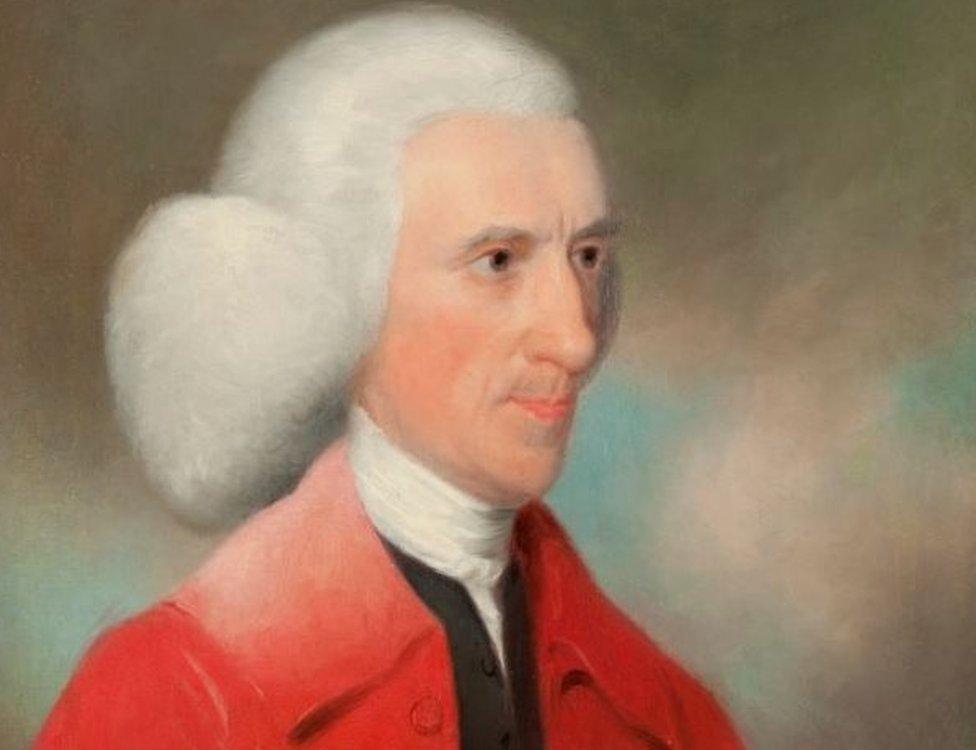Plaque to honour Scots astronomer Alexander Wilson
- Published

Alexander Wilson was Glasgow University's first Regius Professor of Practical Astronomy
A plaque is to be unveiled in Glasgow to honour a pioneering Scottish astronomer.
Alexander Wilson was a surgeon, type-founder, glassblower and meteorologist before being appointed to run the Old College Observatory in Glasgow in 1757.
Three years later he became Glasgow University's first Regius Professor of Practical Astronomy.
Among his achievements was an early attempt to understand the nature and structure of sunspots.
When observing the sunspots at the edge of the Sun he saw them as valleys or caverns in the surface.
We now know these to be anomalies caused by the Sun's magnetic field.
Wilson speculated that the Sun's structure had a hotter outer layer covering a dark globe.
Falling stars
That interpretation was accepted for over a hundred years and his observation that sunspots looked like caverns is still referred to by solar researchers as the Wilson Effect.
The blue plaque from the Institute of Physics Scotland is to be unveiled at Glasgow University's observatory in the west of the city.
It honours him for his work on sunspots and for his theories on gravity.

He observed that sunspots looked like caverns in the surface
Wilson proposed that gravity was "what hinders the fixed stars from falling upon one another" as the Universe rotated around its centre.
That was true for the Universe Wilson knew - our home galaxy - because it rotates around a black hole.
Gravity is not, however, holding the rest of the universe together. It continues to expand but the equipment to observe this was developed long after Wilson's day.
Alexander Wilson was born in 1714, the son of the town clerk of St Andrews.
He graduated with an MA from the university there when he was just 18 years old.
Then came spells as an apprentice surgeon, skilled glassblower and a creator and caster of elegant typefaces.
When he went to work at Glasgow University he took his type-founding business with him.
Moon crater
His other achievements include the first measurements of temperatures at different levels in the atmosphere by using thermometers carried on kites.
He was also able to test how well his solar observation instruments worked by building an "artificial sun" in his laboratory.
Other honours include a crater on the Moon bearing his name.
His son Patrick succeeded him to the Regius Professor's chair in 1784.
One important safety note: Alexander Wilson did not observe the Sun and its spots by looking directly at it, either with the naked eye or through a telescope.
To look at it that way will cause severe eye damage.
Instead he projected an image of the Sun's disc onto a white surface, looking at it indirectly.
Almost three centuries on - unless we own equipment specially designed for looking at the Sun - that is still the best way to do it.